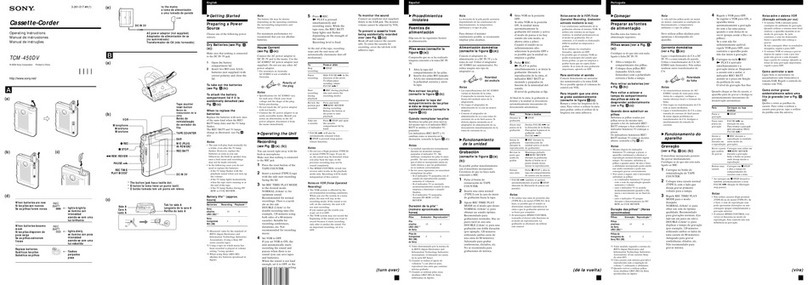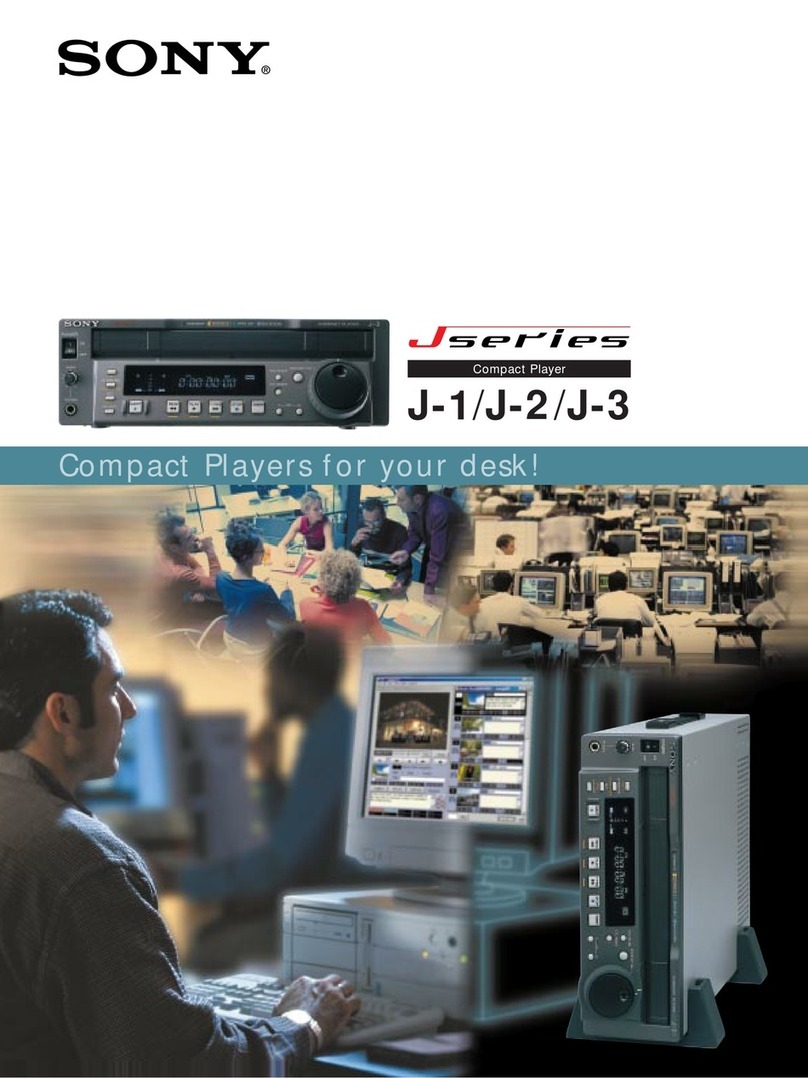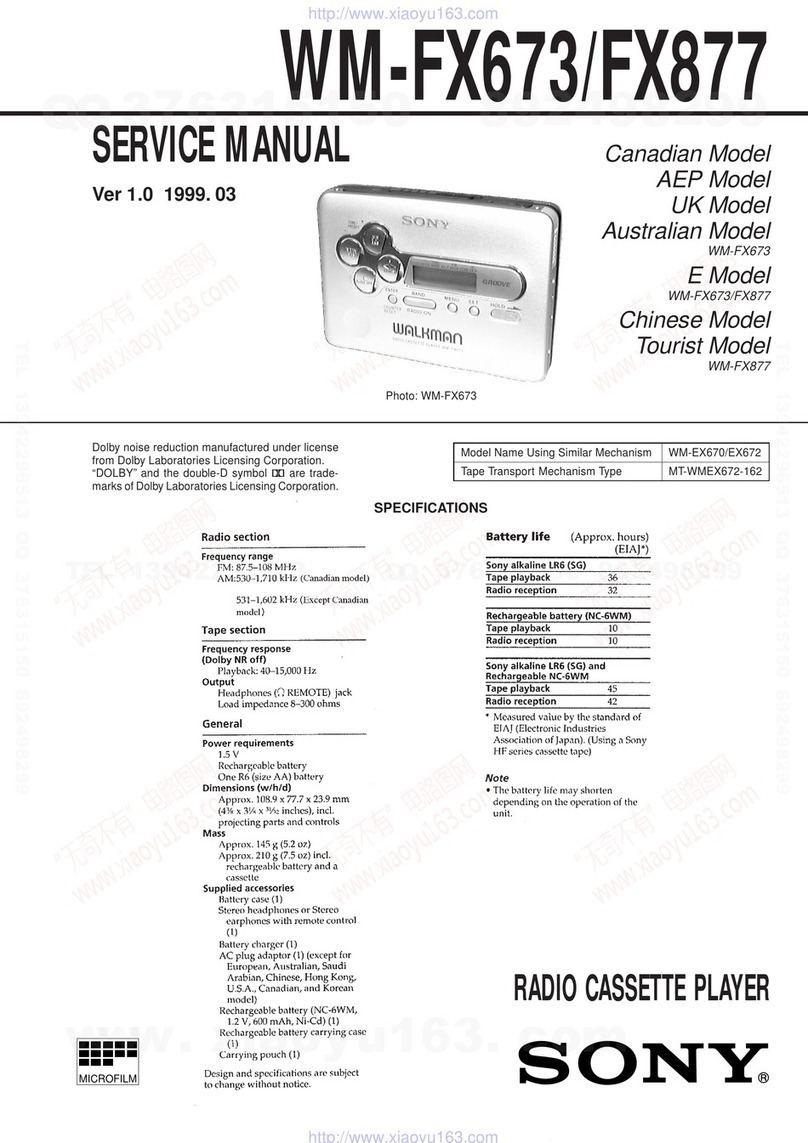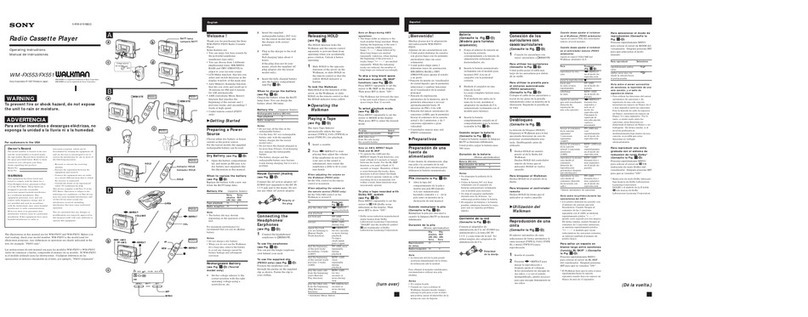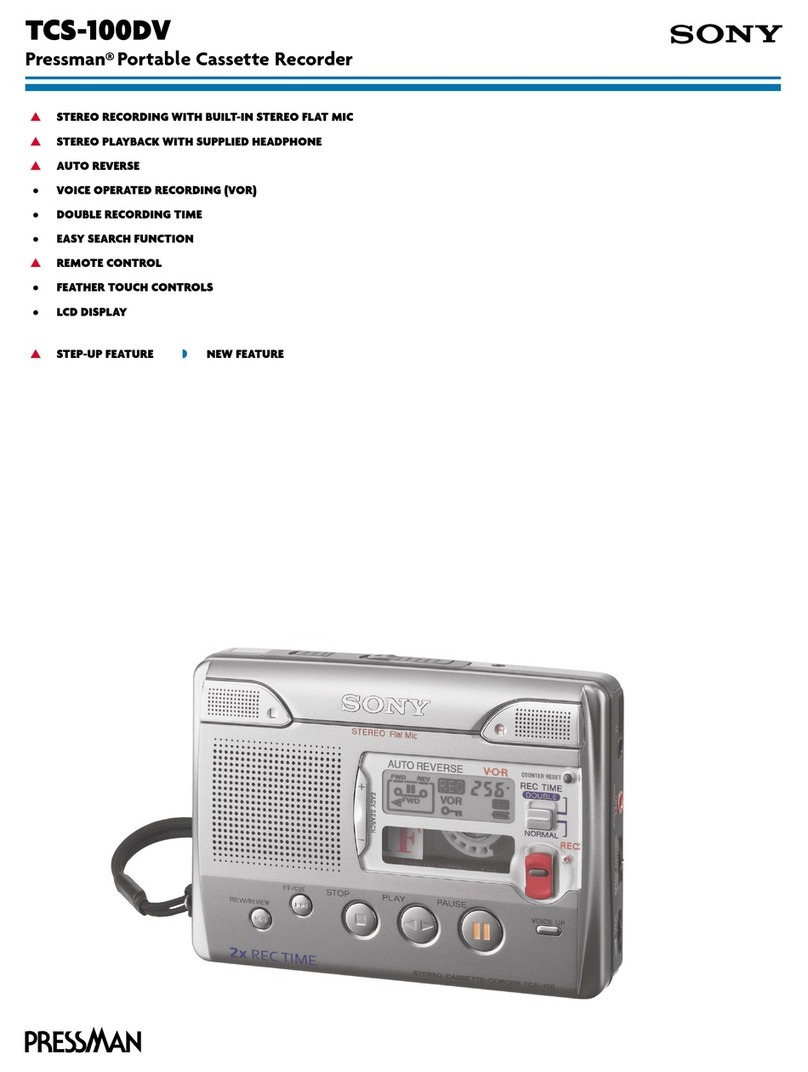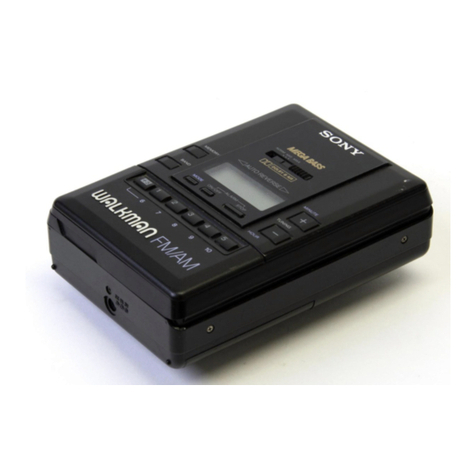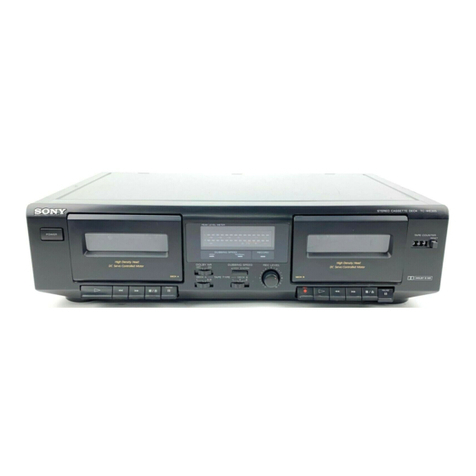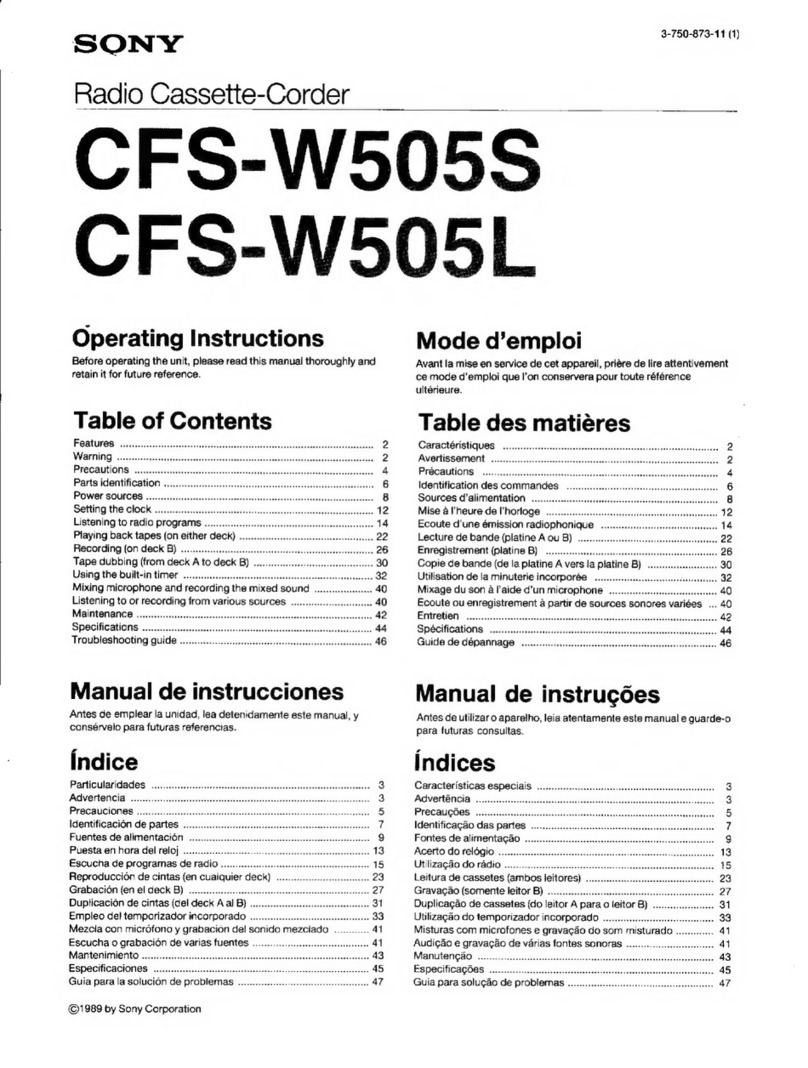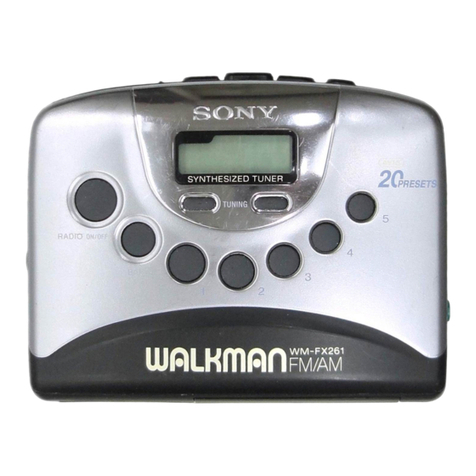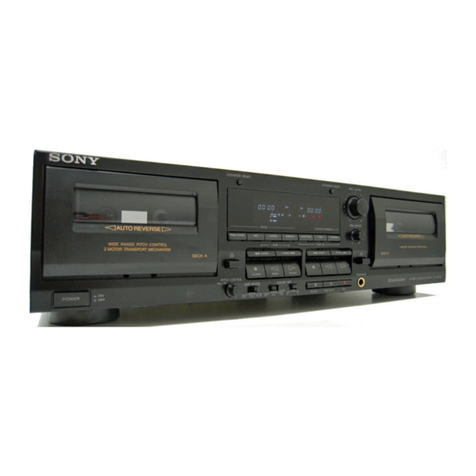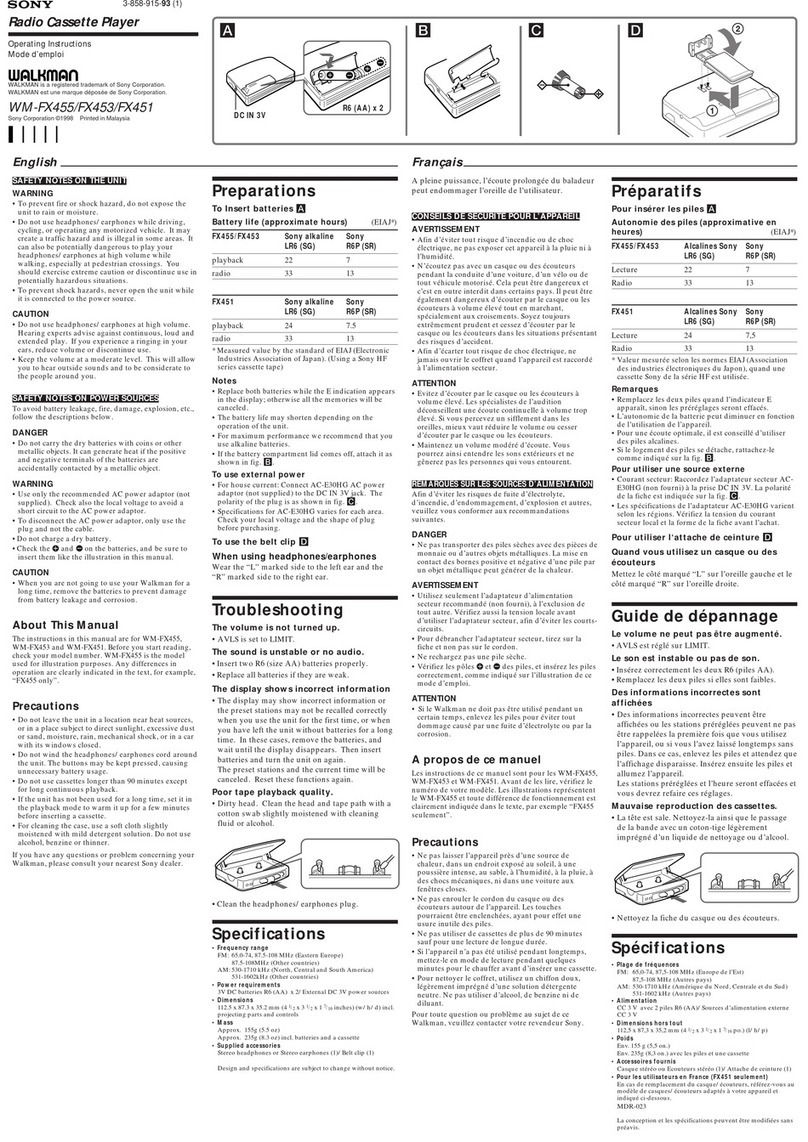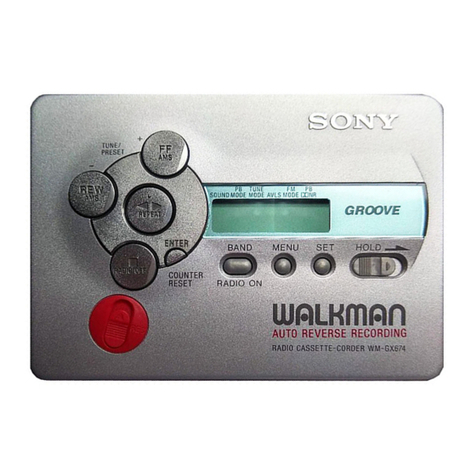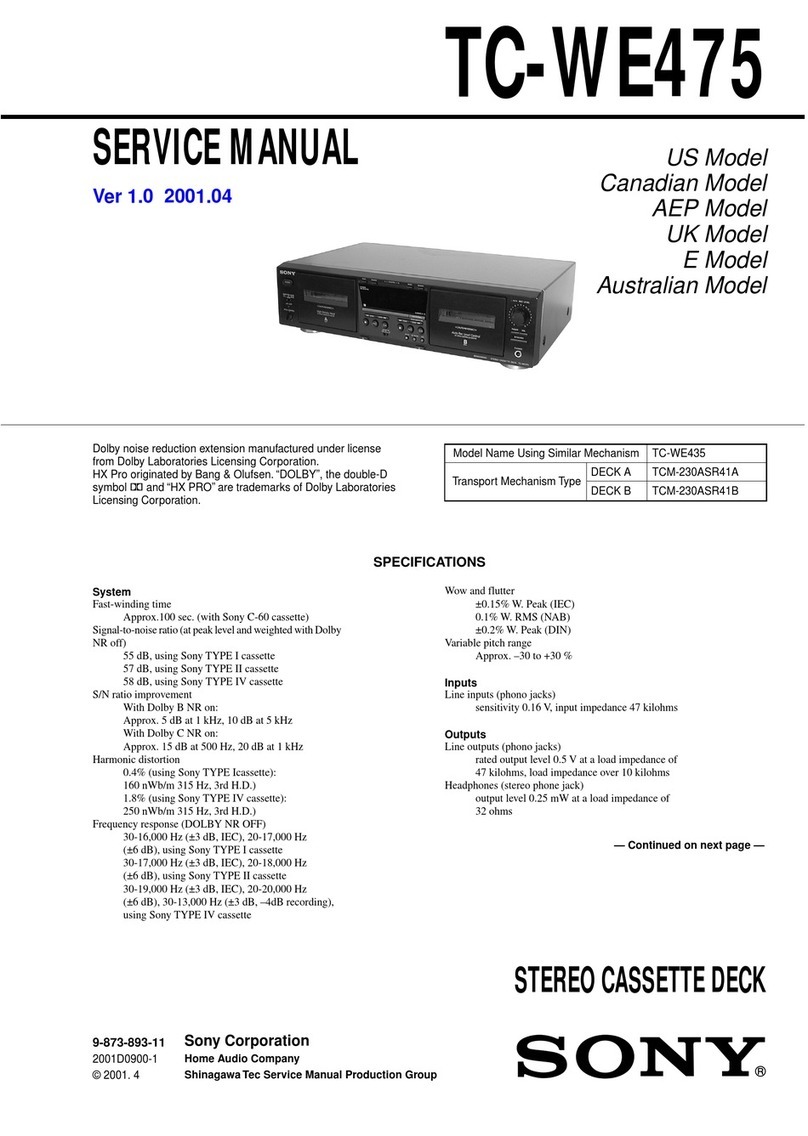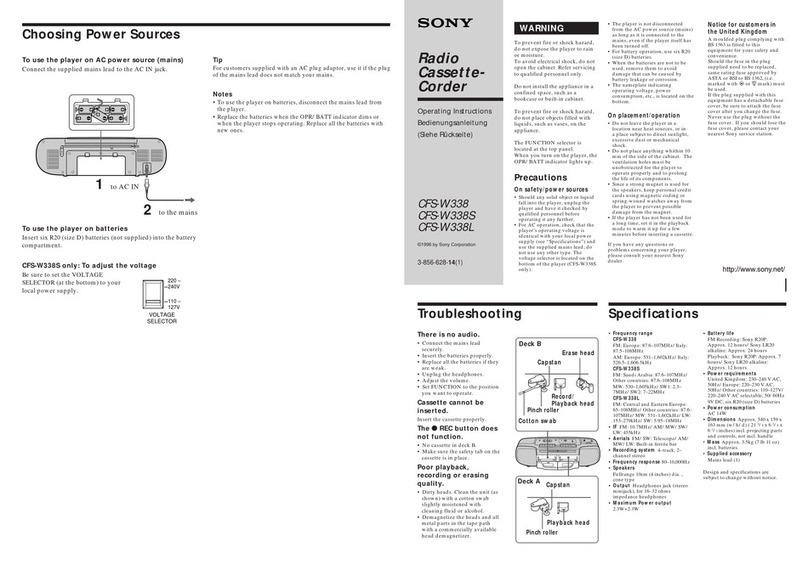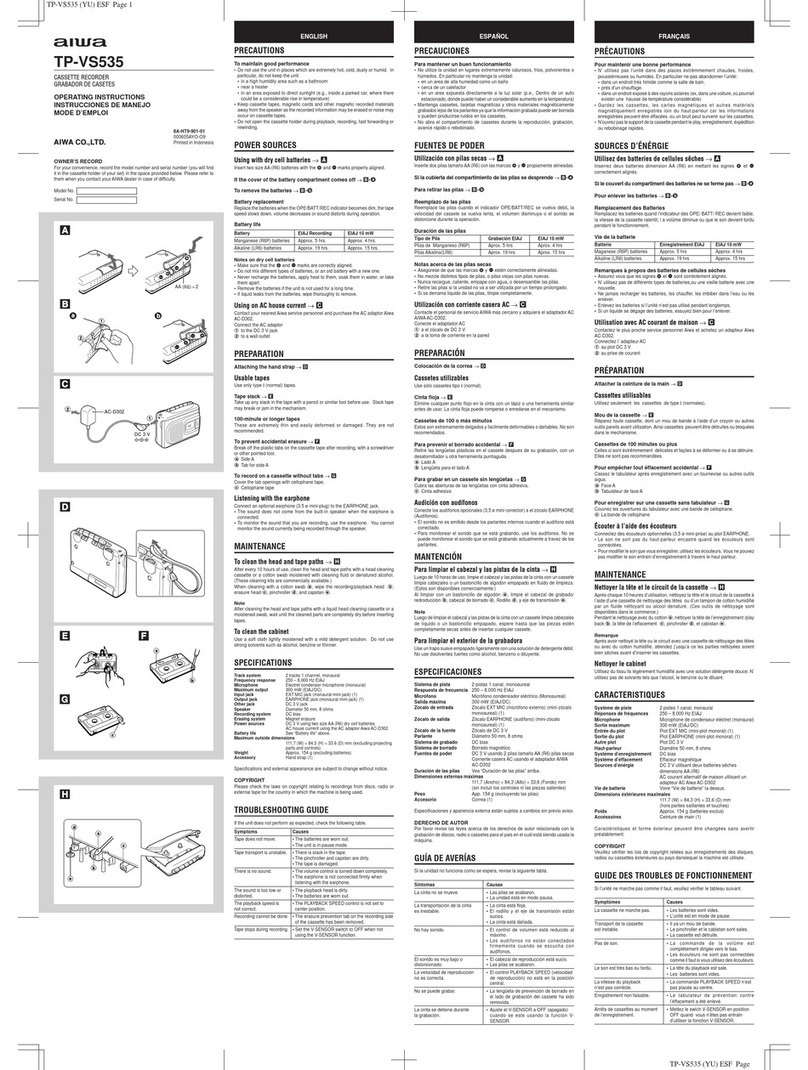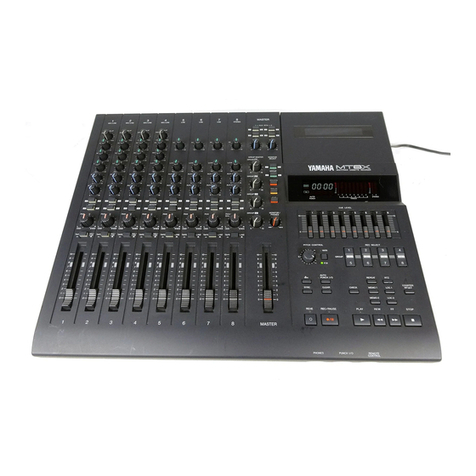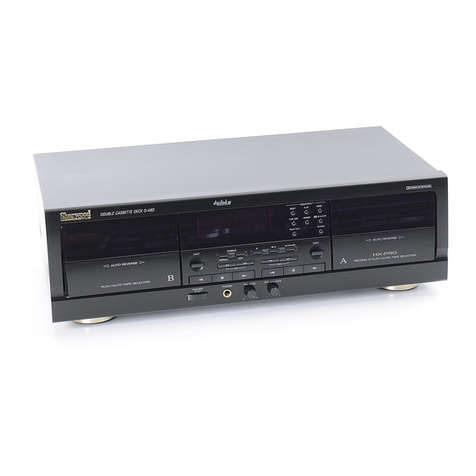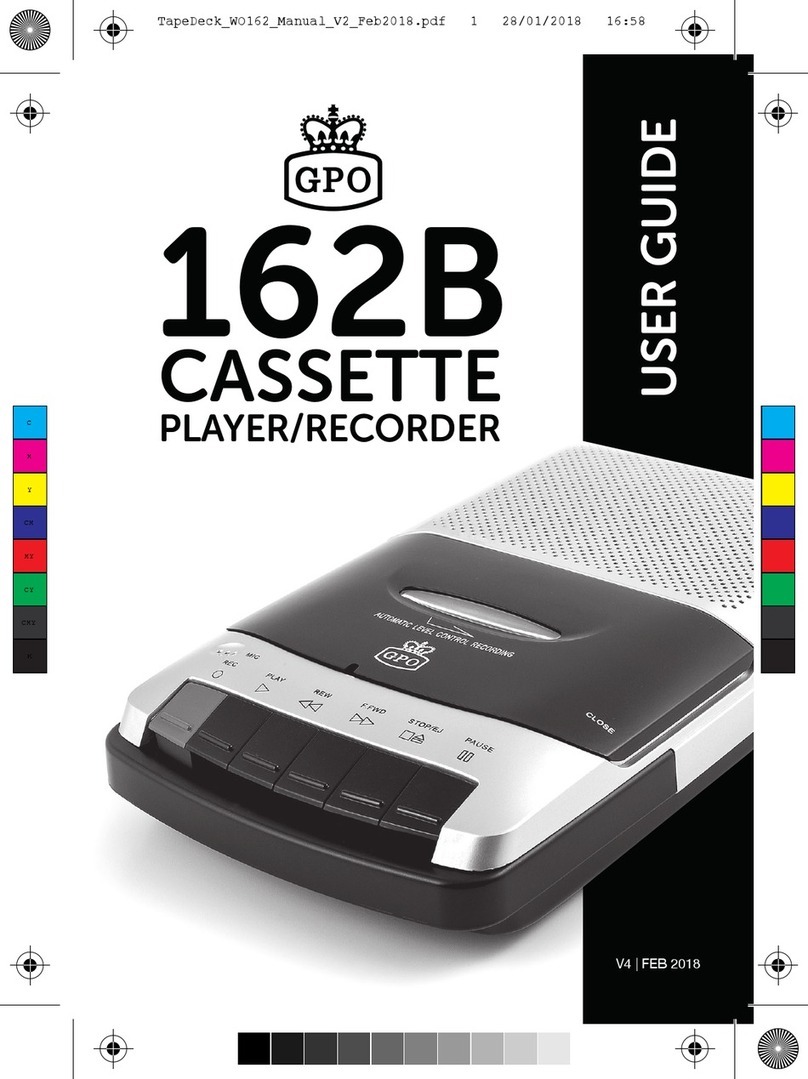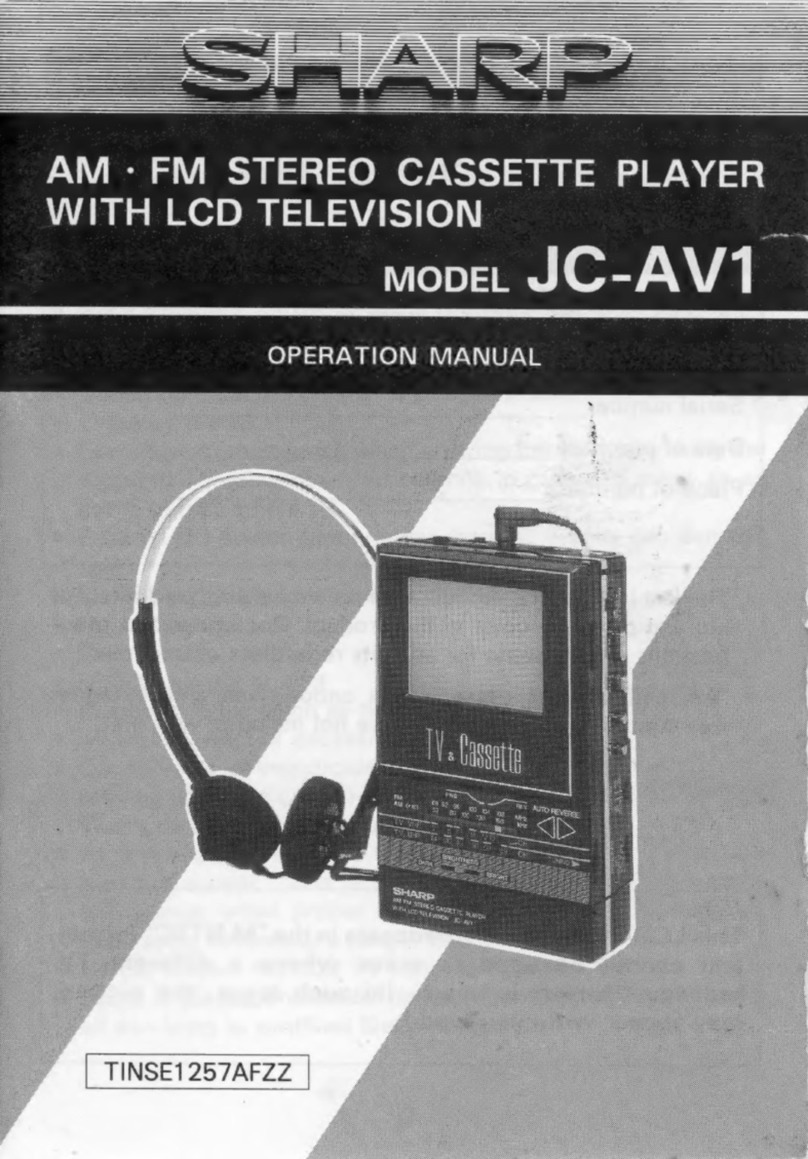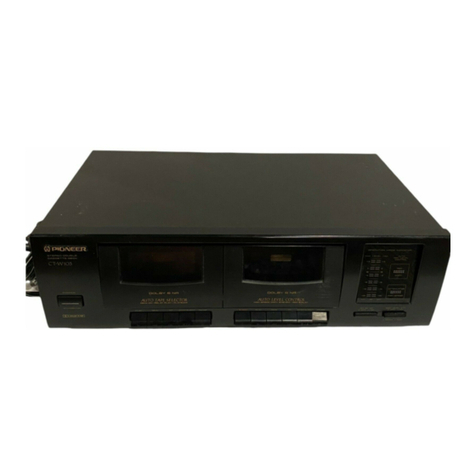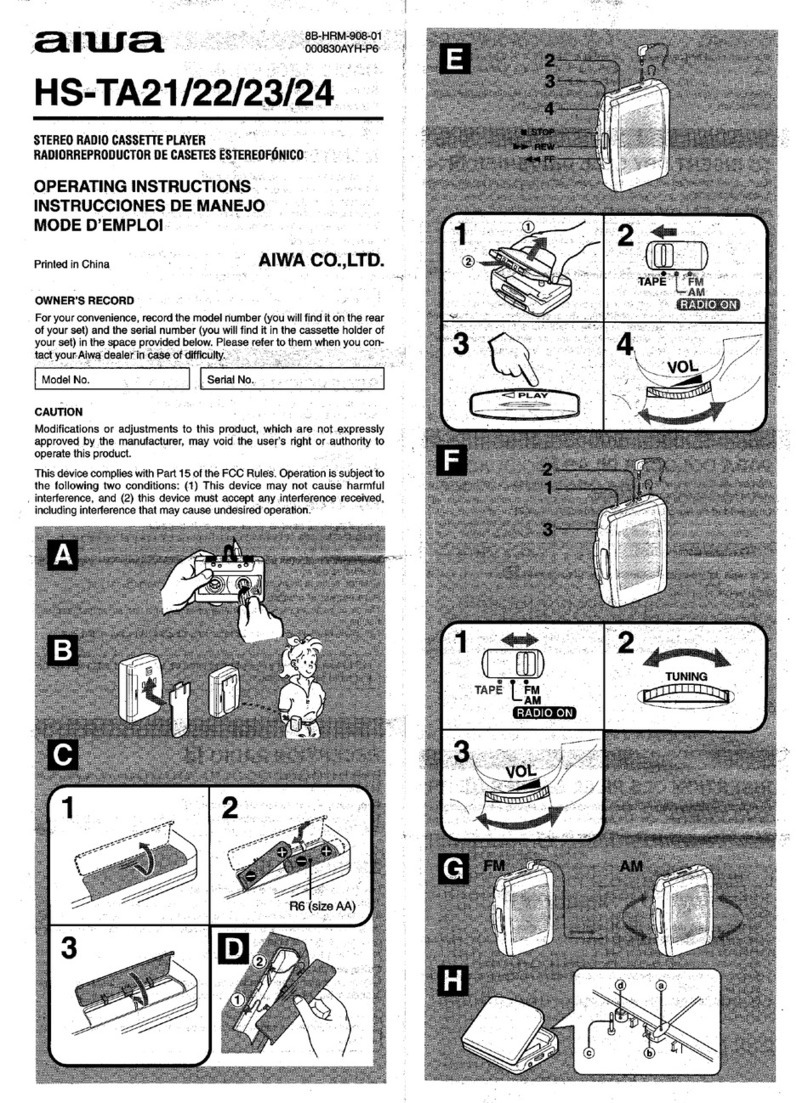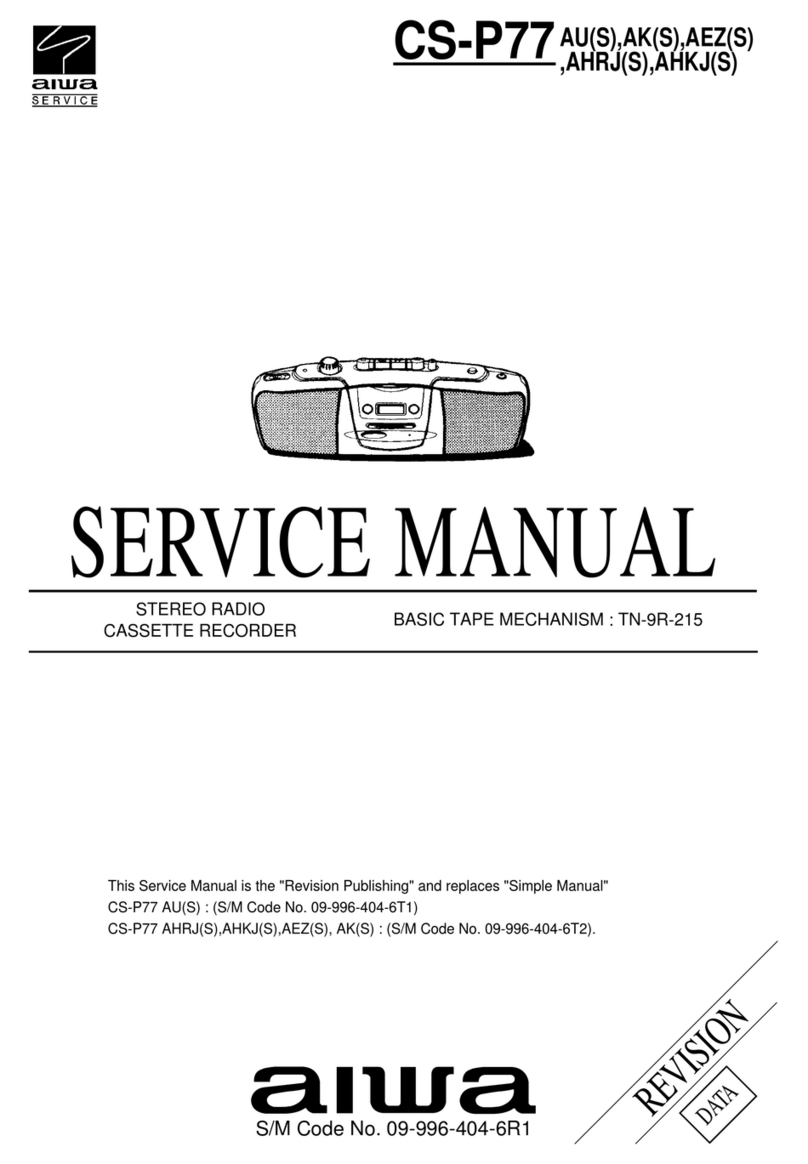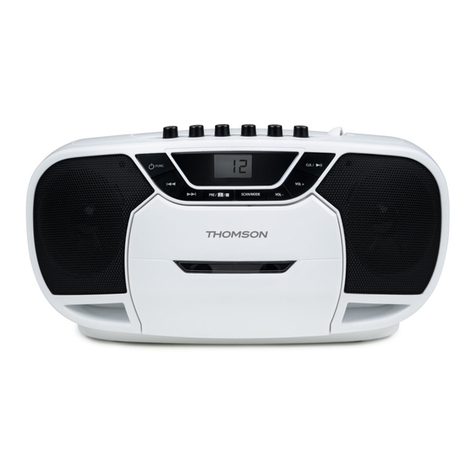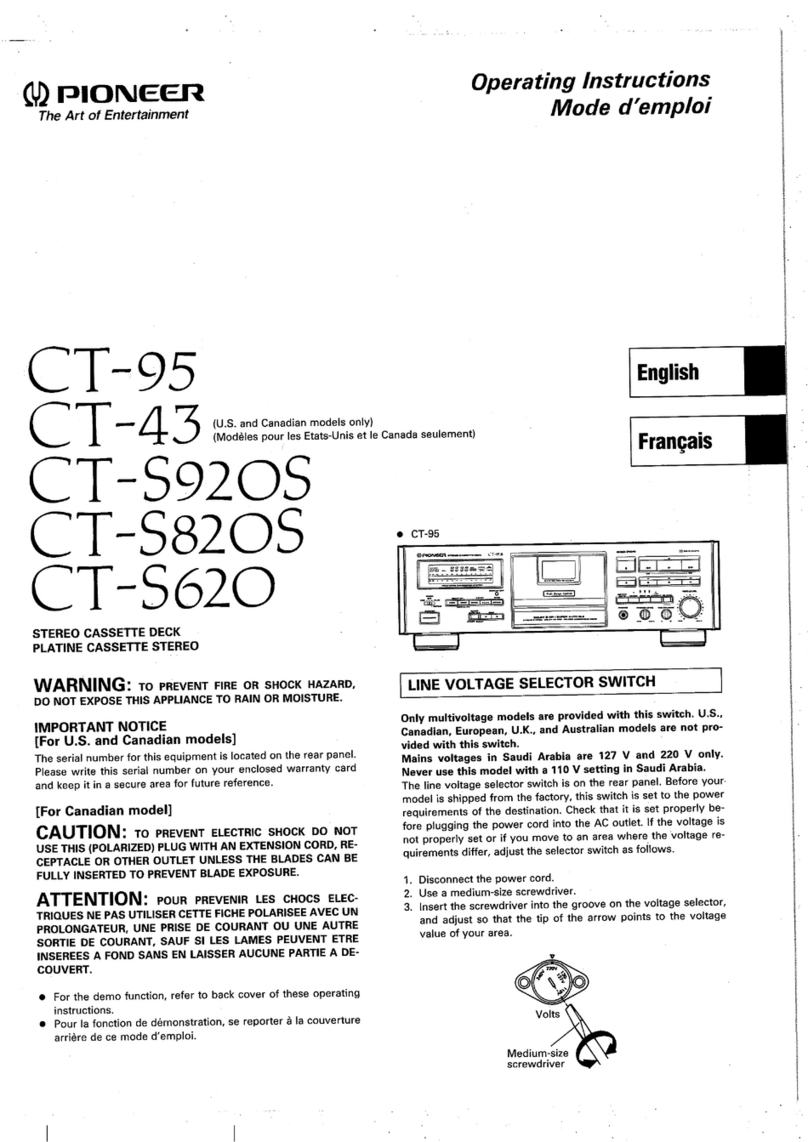2
DXA-WZ5
SAFETY-RELATED COMPONENT WARNING!!
COMPONENTS IDENTIFIED BY MARK 0OR DOTTED LINEWITH
MARK 0ON THE SCHEMATIC DIAGRAMS AND INTHE PARTS
LIST ARE CRITICAL TO SAFE OPERATION. REPLACE THESE
COMPONENTS WITH SONY PARTS WHOSE PART NUMBERS
APPEAR AS SHOWN IN THIS MANUAL OR IN SUPPLEMENTS
PUBLISHED BY SONY.
Notes on chip component replacement
•Never reuse a disconnected chip component.
•Notice that the minus side of a tantalum capacitor may be
damaged by heat.
Flexible Circuit Board Repairing
•Keep the temperature of soldering iron around 270˚C
during repairing.
•Do not touch the soldering iron on the same conductor of the
circuit board (within 3 times).
•Be careful not to apply force on the conductor when soldering
or unsoldering.
TABLE OF CONTENTS
MODEL IDENTIFICATION
— BACK PANEL —
•Abbreviation
AUS:Australian model
E2 : 120V AC Area in E model
E3 : 240V AC Area in E model
KR : Korean model
TW :Taiwan model
PARTS No.
VOLTAGE SELECTOR Switch
Power Voltage Indication
1. GENERAL ·········································································· 3
2. DISASSEMBLY ························································· 5
2-1. Case ··············································································· 5
2-2. Switching Power, DC Fan, Back Panel ························· 6
2-3. MAIN Board ································································· 6
2-4. AMP Board ··································································· 7
2-5. Front Panel Assy ···························································· 7
2-6. Tape mechanism deck (CWM43RR23) ························ 8
2-7. Lid (TC)Assy, Holder (A) Assy, Holder (B)Assy········ 8
3. ELECTRICAL ADJUSTMENTS ································· 9
4. DIAGRAMS······································································ 10
4-1. Block Diagrams - Main Section -································ 11
4-2. Printed Wiring Board - MAIN Board - ······················· 12
4-3. Schematic Diagram - MAIN Board (1/2) - ················· 13
- MAIN Board (2/2) - ················· 14
4-4. Printed Wiring Board - AMP Board -·························· 15
4-5. Schematic Diagram - AMP Board - ····························16
5. EXPLODEDVIEWS
5-1. Front Panel Section ····················································· 17
5-2. Chassis Section ···························································· 18
5-3. Tape Mechanism Deck Section ··································· 19
6. ELECTRICAL PARTS LIST ······································· 20
Unleaded solder
Boards requiring use of unleaded solder are printed with the lead-
free mark (LF) indicating the solder contains no lead.
(Caution: Some printed circuit boards may not come printed with
the lead free mark due to their particular size.)
: LEAD FREE MARK
Unleaded solder has the following characteristics.
•Unleaded solder melts at a temperature about 40°C higher than
ordinary solder.
Ordinary soldering irons can be used but the iron tip has to be
applied to the solder joint for a slightly longer time.
Soldering irons using a temperature regulator should be set to
about 350°C.
Caution: The printed pattern (copper foil) may peel away if the
heated tip is applied for too long, so be careful!
•Strong viscosity
Unleaded solder is more viscous (sticky, less prone to flow) than
ordinary solder so use caution not to let solder bridges occur such
as on IC pins, etc.
•Usable with ordinary solder
It is best to use only unleaded solder but unleaded solder may
also be added to ordinary solder.
[When bringing in the equipment for service]
In case of repairing, please bring the entire system set([HCD-WZ5,
DXA-WZ5],except for the speaker) to the service station.
MODEL
AEP, UK models
E2 model
E3 model
AUS model
KR model
TW model
PARTS No.
4-244-468-0s
4-244-468-1s
4-244-468-1s
4-244-468-3s
4-244-468-9s
4-244-468-8s
POWERVOLTAGE INDICATION
AC:230V 50/60HZ
AC:120V 60HZ
AC:240V 50HZ
AC:230-240V 50/60HZ
AC:220V 50/60HZ
AC:120V 50/60HZ
